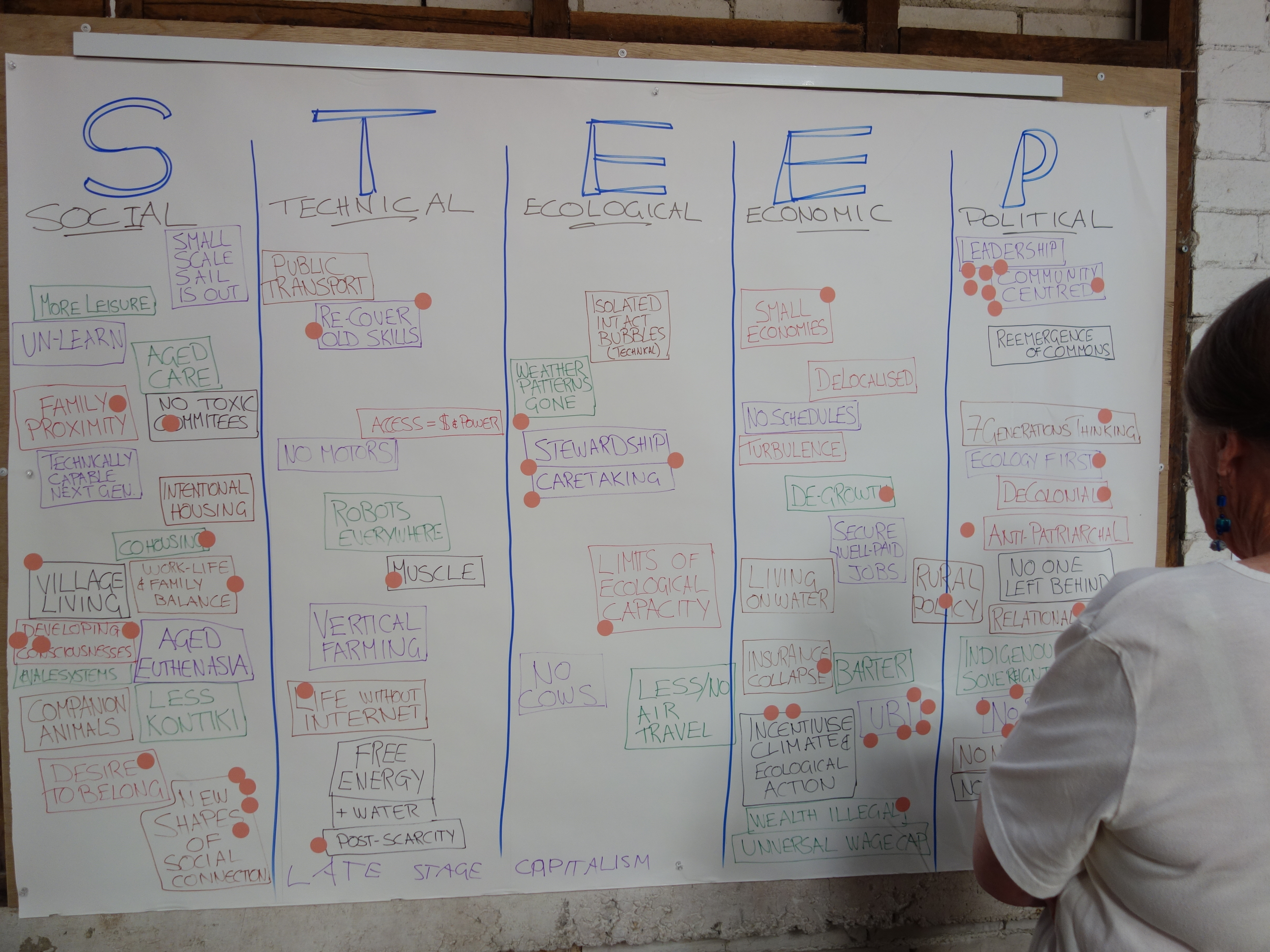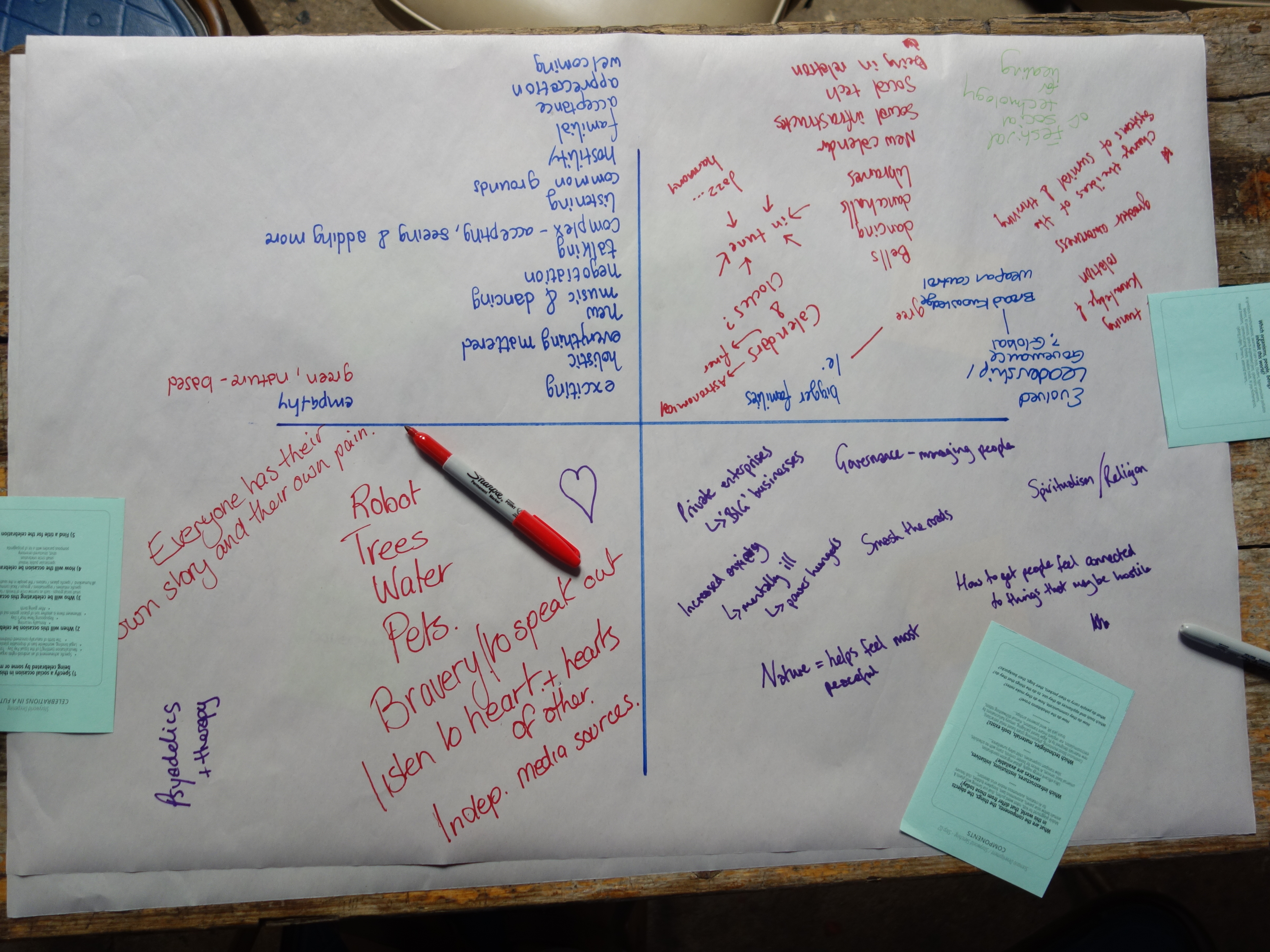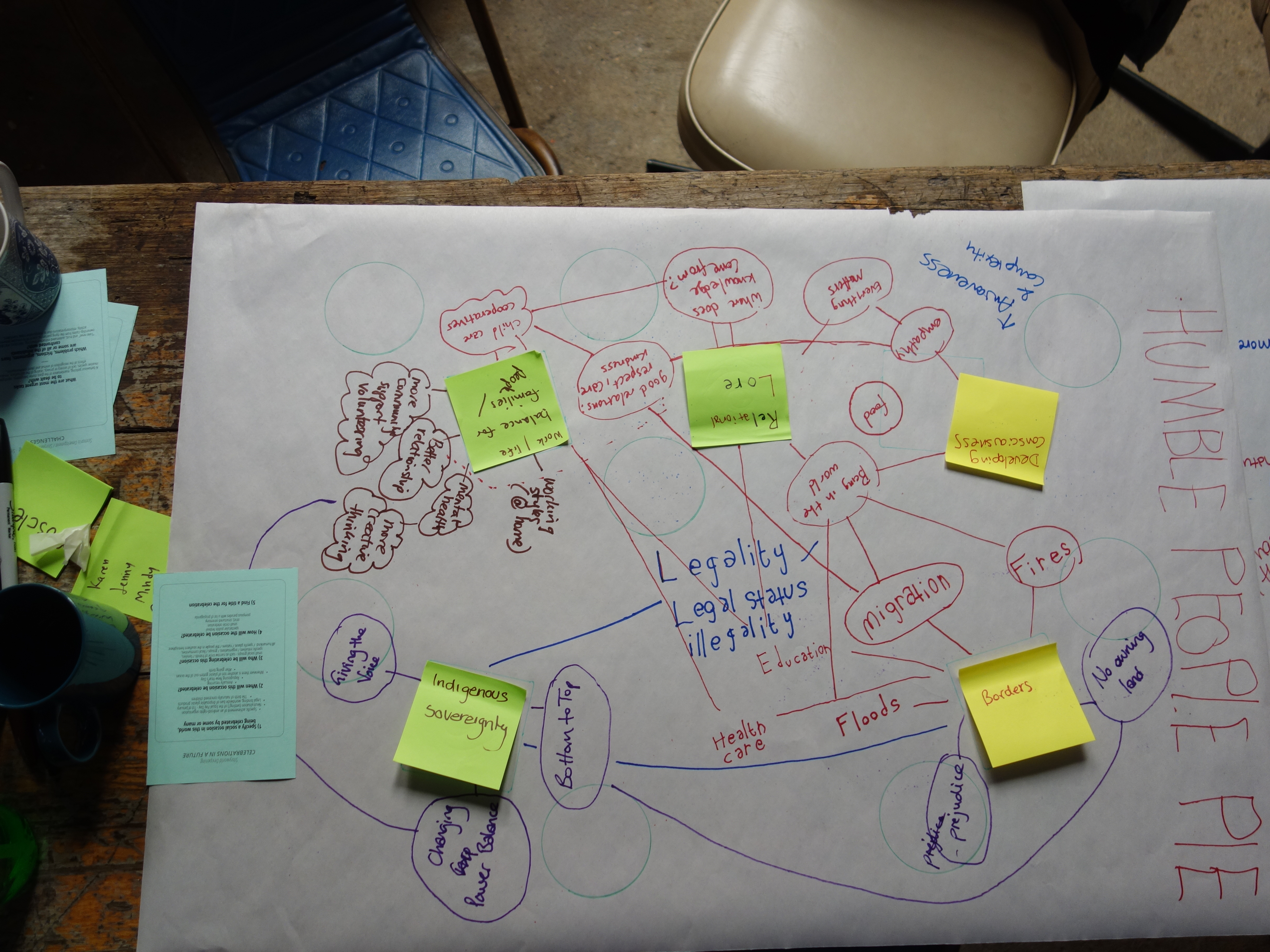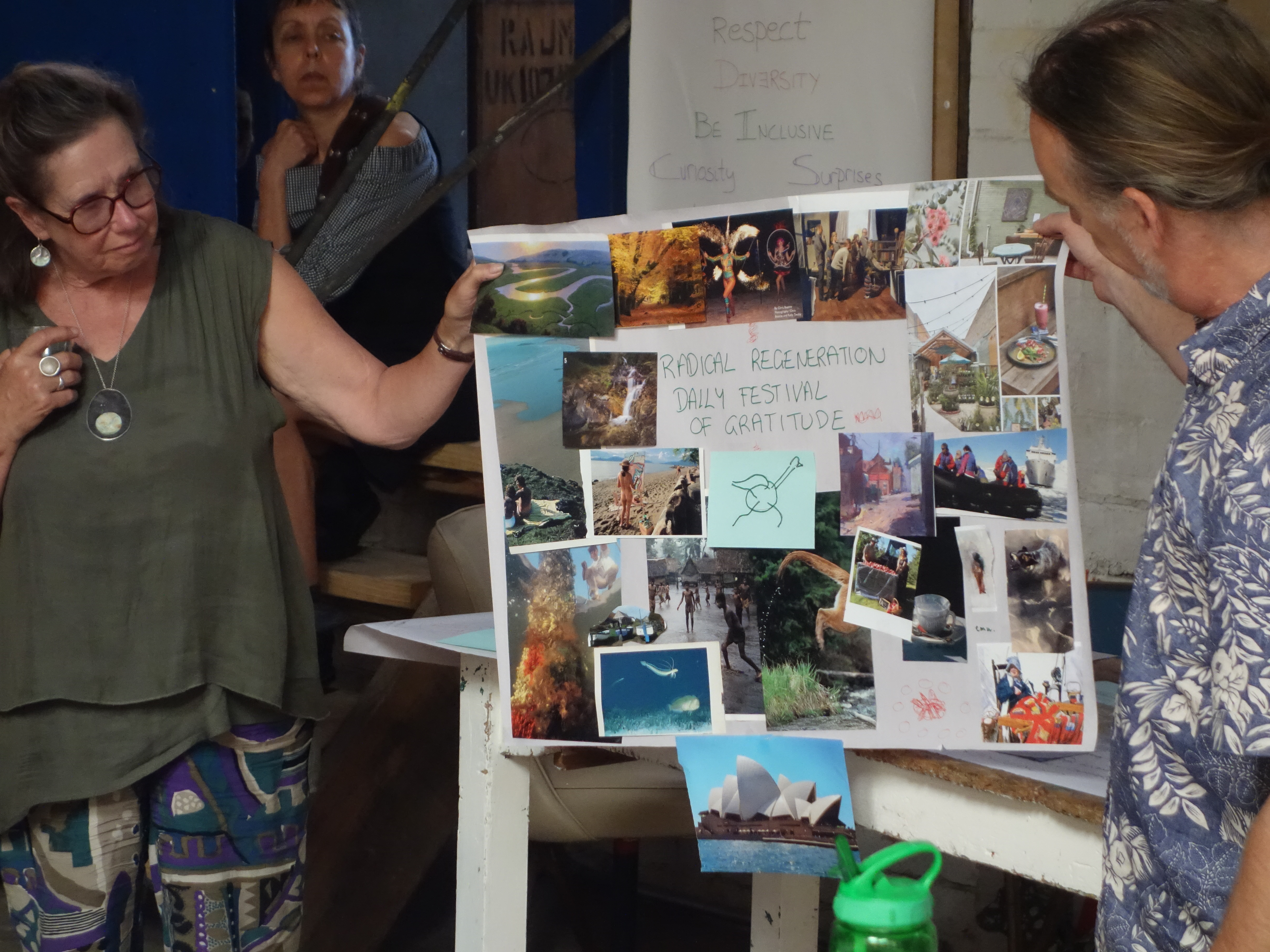In late January, we joined the crew of Arka Kinari for a trip from Sydney to Lake’s Entrance. Once we arrived, the welcoming people from the region took us in. Many of them are organised around the arts residency project FLOAT, with the Iceworks Studio gallery space and the recently opened Slipway event and gallery space. We were invited for dinner at a nearby farm, enjoying a steaming hot shower (after a week of at best luke warm water) from their giant 8m diameter temple to showering, complete with stained glass rotunda in the roof.
But it was not only fun. On Friday night we presented our work as it has been summarised in the book Futures Brought to Life, along with some imagining. This was followed by the Art meets Activism performance from Nova Ruth and Grey Filastine, describing the background and experiences of running Arka Kinari since 2019.





The next day we held a three hour workshop, a futuring exercise with the title “Hurry up and Wait,” the title emerging from the discussions around timing when travel and transport is subject to weather and other elements beyond our control. The advent of fossil fuels and the large amounts of excess energy has enabled society to organise things perfectly, with travel schedules and logistics chains accurate to within hours if not minutes. Imagining a future with less fossil fuels, we will be left in the situation as we were in with Arka Kinari, where it was unsure when we could leave Sydney Harbour, how long we would stay in Twofold Bay at Eden and thus when we would get to Lakes Entrance. Would it be a week out from Sydney, or 10 days, or only four days after we departed? Favourable winds should be taken advantage of; unfavourable winds mean it is not worth departing because travel will be so slow and uncomfortable with the danger that things will break. So there is a lot of rushing to be somewhere, and then waiting for the next weather window. Hurry Up and Wait.
The workshop attracted a group of 18 participants, some of whom have been part of such activities before, others who have never done something like this. Because we only had three hours (we did extend at the end) we rushed through an icebreaker and some idea collection processes before the discussions in smaller groups started. The scenarios and storyworlds that emerged were interesting and rich, surprising and somehow very mundane; reflecting everyday life in a possible future.






There is interest to deepen this use of possible (and preferable) futures as we move forward, with the FLOAT School of Art emerging and collaborations with the local council anticipated. We and many other futures practitioners find that there is a certain deflation that happens after a visioning workshop: a collection of scenarios, now what? Because we are not embedded in the community where we do futuring exercises, we are not accompanying them to use their visions of the future that have emerged. We are not change managers, or community activists, or anything else like that. But there are people who have those roles, and there is interest to work with us to do the visioning processes, to use the tools and techniques that we have developed to allow people to develop their Möglichkeitssinn, their sense of possibilities, and then pass them on to various experts in change management, funding, organisational support and other areas to let the longer process of change take root and develop.
Let’s see how that emerges. East Gippsland was a great visit, with many wonderful people to great things. We look forward to seeing how we can continue to work together.